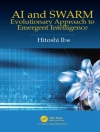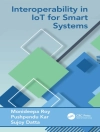The last decade has witnessed an unprecedented development and
growth in global wireless communications systems, technologies and
network ‘traffic’ generated over network
infrastructures.
This book presents state-of-the-art energy-efficient techniques,
designs and implementations that pertain to wireless communication
networks such as cellular networks, wireless local area networks
(WLANs) and wireless ad hoc networks (WAHNs) including mobile ad
hoc networks (MANETs), and wireless sensor networks (WSNs) as they
are deployed across the world to facilitate ‘always on’
reliable high-speed wireless access from anywhere, at anytime to
accommodate the new paradigm of the ‘Internet of
Things’ (Io T).
The pervasive and exponential growth of Wi-Fi and the impact of
bandwidth-intensive applications on the energy consumption of
Wi-Fi-enabled devices are discussed along with energy harvesting as
an advantageous option to power WAHNs.
The book aims to serve as a useful reference for researchers,
students, regulatory authorities, and educators.
Tabela de Conteúdo
PREFACE ix
CHAPTER 1. ENERGY EFFICIENCY IN CELLULAR NETWORKS 1
1.1. Overview of cellular communication networks 1
1.2. Metrics for measuring energy efficiency in cellularwireless communication systems 4
1.3. Energy efficiency in base stations 4
1.4. Energy-efficient cellular network design 10
1.5. Interference management and mitigation 11
1.6. Enabling technologies 12
1.6.1. Energy-efficient communication via cognitiveradio 12
1.6.2. Using cooperative relays to support energy-efficientcommunication 13
1.6.2.1. Enabling energy-efficient communication via fixedrelays 14
1.6.2.2. Communications in cellular networks via usercooperation 15
CHAPTER 2. ENERGY EFFICIENCY IN WIRELESS AD HOCNETWORKS 17
2.1. Overview of wireless ad hoc networks 17
2.2. Metrics for measuring energy efficiency in wireless ad hocnetworks 18
2.3. Energy losses in wireless ad hoc networks 19
2.4. Energy efficiency in wireless sensor networks 20
2.4.1. Energy efficiency in wireless sensor networks 21
2.5. Mobile ad hoc networks (MANETs) 32
2.5.1. Energy efficiency in mobile ad hoc networks 33
CHAPTER 3. ENERGY EFFICIENCY IN WIRELESS LOCAL AREANETWORKS 37
3.1. Overview of wireless local area networks 37
3.2. Energy consumption metrics for WLANs 39
3.3. Energy efficiency in WLANs 40
3.3.1. Physical layer-based energy-efficient schemes 40
3.3.2. Medium access control (MAC) layer-based energy-efficientschemes 40
3.3.3. Cross-layer-based energy-efficient schemes 43
3.4. Energy efficiency strategies in IEEE 802.11n 46
CHAPTER 4. ENERGY HARVESTING IN WIRELESS SENSORNETWORKS 49
4.1. Energy harvesting 49
4.1.1. The harvesting concept 53
4.1.1.1. Universal energy-harvesting model 54
4.2. Harvesting techniques 55
4.2.1. Mechanical energy sources 55
4.2.2. Thermal energy sources 57
4.2.3. Radiation energy sources 58
4.2.4. Comparison of harvesting sources 60
4.3. Energy harvesting storage devices 61
4.4. Power management for EH-WSN 62
4.4.1. Discussion on power management for energy harvestingsystems 63
4.5. Conclusion 64
CHAPTER 5. FUTURE CHALLENGES ANDOPPORTUNITIES 65
5.1. Energy efficiency in cellular networks 65
5.1.1. Low-energy spectrum sensing 66
5.1.2. Energy-aware medium access control and energy-efficientrouting 66
5.1.3. Energy-efficient resource management in heterogeneouscellular networks 67
5.1.4. Cross-layer design and optimization 67
5.1.5. Energy considerations in practical deployments ofcooperative and cognitive radio systems 68
5.2. Energy efficiency in ad hoc networks 69
5.2.1. Sampling techniques 69
5.2.2. MAC protocols 70
5.2.3. Routing 70
5.2.4. Mobility challenges 71
5.2.5. Cognitive radio technology applied in wireless ad hocnetworks 71
5.3. Energy efficiency in WLAN 71
5.3.1. IEEE 802.11ac (gigabit Wi-Fi) 71
5.3.2. MIMO-based WLAN 72
5.3.3. Super Wi-Fi (IEEE 802.22) 72
5.4. Energy harvesting in wireless sensor networks 73
5.4.1. Challenges for energy harvesting in harshconditions 73
5.4.2. Radiation-based energy harvesters 74
5.4.3. Mechanical sources 74
5.4.4. Thermal sources 75
5.4.5. Medical energy harvesting for wireless sensordevices 75
5.5. Energy efficiency for wireless technologies for developingcountries 76
BIBLIOGRAPHY 79
LIST OF ACRONYMS 97
INDEX 101
Sobre o autor
Oswald Jumira, MIH Media Lab, Department of Electrical and Electronic Engineering, University of Stellenbosch, Stellenbosch, South Africa.
Sherali Zeadally, Associate Professor University of the District of Columbia, Washington DC, USA.












